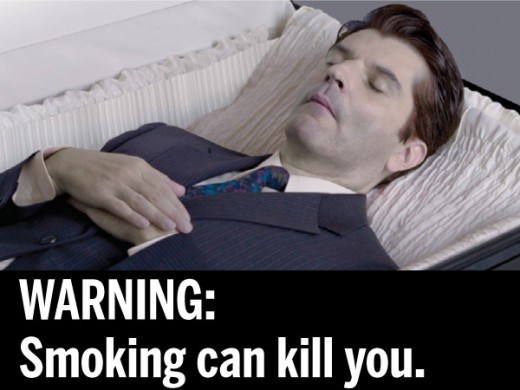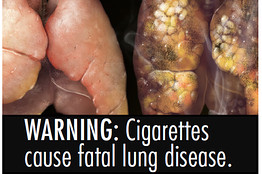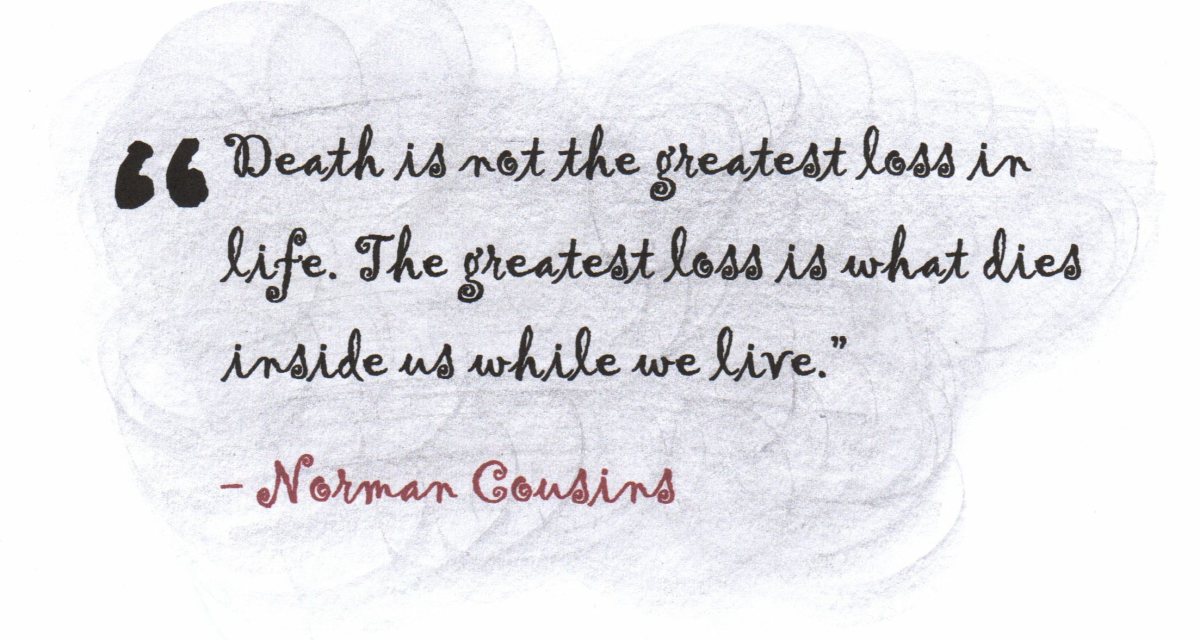How Smokers Think about Death
Graphic Warnings May Not Work


Smoke, Choke, Croak: Any Questions?
2012 Required Graphic Cigarette Labeling
In the first major change to Cigarette packaging in a quarter-century, the Food and Drug Administration will require graphic Warning Labels that cover half a package's front and rear and the top 20% of all Cigarette ads. The U. S. will join dozens of nations around the world in labeling cigarette packages with large photographs of diseased organs, amputated limbs and other gruesome images. By Oct. 22, 2012, manufacturers will no longer be able to distribute cigarettes for sale in the United States that do not display the new warnings, which will be updated as needed.
People to be Reminded of Their Own Mortality
The labels will feature either drawings or photos illustrating graphically the dangers associated with smoking and will be accompanied by text stating that smoking is addictive or that it kills. Previous research has indicated when people see images of cigarette-induced ailments; they are reminded of their own mortality. However, a study presented in May annual meeting of the Association for Psychological Science suggests reminders of mortality might not always have the desired effect.
Grim, Ugly Pictures
The pictures feature such things as a diseased lung, a corpse, and a man smoking a cigarette through a tracheotomy tube. They are not quite as grim as some used in other countries, but regulators hope they will be sufficiently frightening to keep young people from beginning to smoke and to strengthen the will of those who are attempting to quit.
Does this kind of approach works when it comes to actually getting people to stop smoking? (Some research suggests it may be counterproductive for certain smokers.)
May Not Have Intended Effect
James Arndt, a psychologist at the University of Missouri, had students smokers complete questionnaires designed to induce either thoughts of their own mortality, or thoughts about failing an exam. Then the researchers offered the students a cigarette and measured every person’s smoking intensity – each puff’s volume, flow, and duration. Students who did not smoke often smoked with less passion after being reminded of their own mortality, as compared with the light smokers who read about failing an exam. As Arndt explains, the infrequent smokers may have been responding to thoughts of death by trying to reduce their own vulnerability. But heavy smoking students reacted to thoughts of death by taking even heavier drags on their cigarettes. Arndt suggests the students might have been subconsciously attempting to dispel a negative mood with an enjoyable activity.
Other researchers also suggest regulators may want to rethink this ashes-to-ashes theme. New research by Jochim Hansena, Susanne Winzelerb and Sascha Topolinskic
New York University, Department of Psychology, suggests that, for a certain set of smokers, those allusions to death may actually increase the likelihood they will light up.
Terror Management Theory
When the death makes you smoke: A terror management perspective on the effectiveness of cigarette on-pack warnings…
Based on terror management theory, the present study investigates the impact of mortality-salient warnings on cigarette packages compared to warnings with no mortality threat. Results suggest that to the degree that smoking is a source of self-esteem, later attitudes towards smoking become more positive if the warning message is mortality-salient. On the contrary, if the warning is terrifying but not mortality-salient and relates to the source of self-esteem, smoking attitudes become more negative with higher smoking-based self-esteem. Thus, mortality-salient warnings may increase the tendency to favor smoking under certain circumstances. This fatal ironic effect highlights the importance of a risk communication that matches the self-esteem contingencies of the recipients, and it has urgent implications for health care policy.
Therefore, graphic warning labels on cigarettes might not have the intended effect on everyone who sees them.
Related Article:
http://hubpages.com/hub/Smoke-Choke-Croak-Radioactive-Cigarettes








